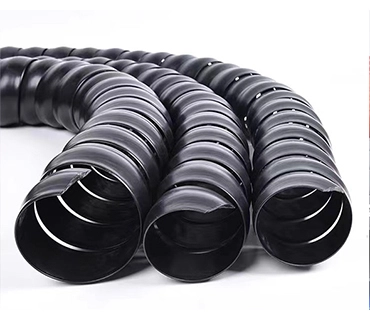Fiberglass heat shield sleeves are designed to protect electrical wiring, hoses, hydraulic lines, and other sensitive components from high temperatures, flames, and other hazards. These sleeves are made from a woven fiberglass fabric and often coated with silicone, providing excellent thermal and insulation properties. To ensure the longevity and performance of a fiberglass heat shield sleeve, routine maintenance and care practices are essential. Here are some tips on how to maintain and care for a fiberglass heat shield sleeve.
How to Maintain a Fiberglass Heat Shield Sleeve?
Inspect Regularly
It is essential to inspect the fiberglass heat shield sleeve regularly for any signs of damage, wear and tear, fraying, or loss of material properties. Inspect the sleeve from end to end and look out for any discoloration, tears, or small cracks that may lead to failures.
Clean Thoroughly
Regular cleaning is necessary to maintain the functionality and hygiene of a fiberglass heat shield sleeve. Use a mild soap, warm water, and a soft cloth or brush to clean the sleeve. Avoid using any harsh chemicals, abrasive materials or high-pressure water jets, as they can damage the sleeve surface.
Replace Damaged Sleeves
After inspecting the sleeve, if you find a damaged, worn or torn area, it is important to replace it immediately. Damaged sleeves can reduce the effectiveness of protection and potentially increase the risk of hazards to personnel and equipment.
Safety Tips for Working with Fiberglass Heat Shield Sleeves
Wear Protective Gear
When working with fiberglass heat shield sleeves, it is important to wear protective gear such as gloves, safety goggles, and a respirator or mask. The fibers of fiberglass heat shield sleeves can irritate the skin, eyes or lungs, resulting in allergic reactions or respiratory issues.
Handle with Care
Treat fiberglass heat shield sleeves gently, as rough handling can damage the fibers and reduce their insulating properties. Avoid tying knots, crimping or crushing the sleeves, as this can create gaps in insulation that may expose the underlying equipment to heat or flames.
Troubleshooting Common Issues with Fiberglass Heat Shield Sleeve
Fiberglass heat shield sleeves can develop some common issues, such as fraying, shrinking, or loss of insulation efficacy. Here are some troubleshooting tips to address these issues.
Fraying
If the edges of the fiberglass heat shield sleeve are fraying, use a pair of scissors to trim the edges neatly. Make sure to avoid cutting into the sleeve material, as this may create a hole.
Shrinking
If the sleeve is shrinking, you may have to replace it with a new one of the right size.
Loss of Insulation Efficacy
If you find that the sleeve is losing its insulation efficacy, consider reapplying a silicone coating. This can help to restore the original insulating properties of the sleeve.
Proper maintenance and care of a fiberglass heat shield sleeve are essential to ensure the longevity and performance of this important component. Regular inspections, cleaning, and replacement of damaged sleeves can help to prevent hazards to personnel and equipment. By following these simple tips, you can keep your fiberglass heat shield sleeve in top shape for years to come.

















